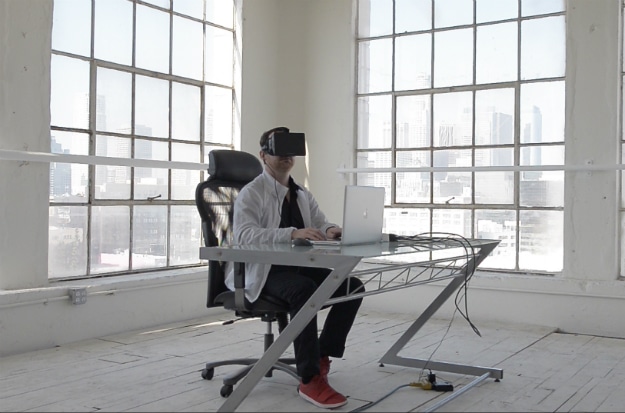There is a new high-tech phenomenon sweeping the architectural industry, and it is enabling people to get closer than ever to concepts and designs. Virtual Reality has infiltrated this niche with the advent of new technological creations such as Oculus Rift and HTC Vive. A whole new sub-genre in the field of architecture has spawned thanks to these powerful virtual reality headsets that designers can use to bring their clients up close and personal, even if they are seeing designs on the other side of the World.
What This Technology Is Doing
In unprecedented fashion, an architectural firm can now seamlessly transport their prospective clientele into a new dimension that can allow them to explore different buildings, even ones that don’t even exist yet.
Imagine being able to tip-toe along the scaffolding of a new theater in cosmopolitan Paris, then fluidly transition into the old federal post office in Washington D.C that is about to be transformed into a 5-Star hotel. These are the types of walls that virtual reality is breaking and the foundation that it is building to set the trend for the future of the industry.
Technology such as this is being used to completely transform the modus operandi in architecture, and it’s not just benefiting this profession. The design firms who create these realistic virtual worlds are now facing a growing demand for their skill set.
[pullquote]The construction and engineering fields are also able to capitalize on this and can bring people into their sites, even if they are restricted from doing so physically.[/pullquote] You can climb flights of stairs, take photographs of specific points, see what areas sunlight will fill look in every direction, touch the keys on a virtual control panel inside a building, and even teleport to another part of a structure all by using your hands.
The sheer amount of time this can save is innumerable because changes can easily be made to a design even as it is being built, which really allows people to understand the true scope and scale of a project. All of this which was once fantasy is fast becoming a reality and shaping the future of how many professions will eventually operate.
How This Is Shaping Up For The Future
While it is still in its early stages and core elements such as graphics and speed will be improved in the near future, this is definitely shaping to become the norm and a standard industry practice.
There are already talks about integrating features such as allowing designers to make alterations in real-time. This can facilitate the option for clientele to request a tweak to the design to see how it would look and function without having to wait extended periods of time, especially if it is just a minor adjustment.
And while there are a few legal hurdles which have to be considered such as displaying too much information or sensitive aspects of a design to people, the general consensus is that there are a time and a place for everything, and the designers and the firms have the ability to render their virtual landscapes in any way they want to present it. The possibilities are virtually endless and having the ability to enable people such a personal and life-like experience with their projects is truly a game-changer.

COMMENTS